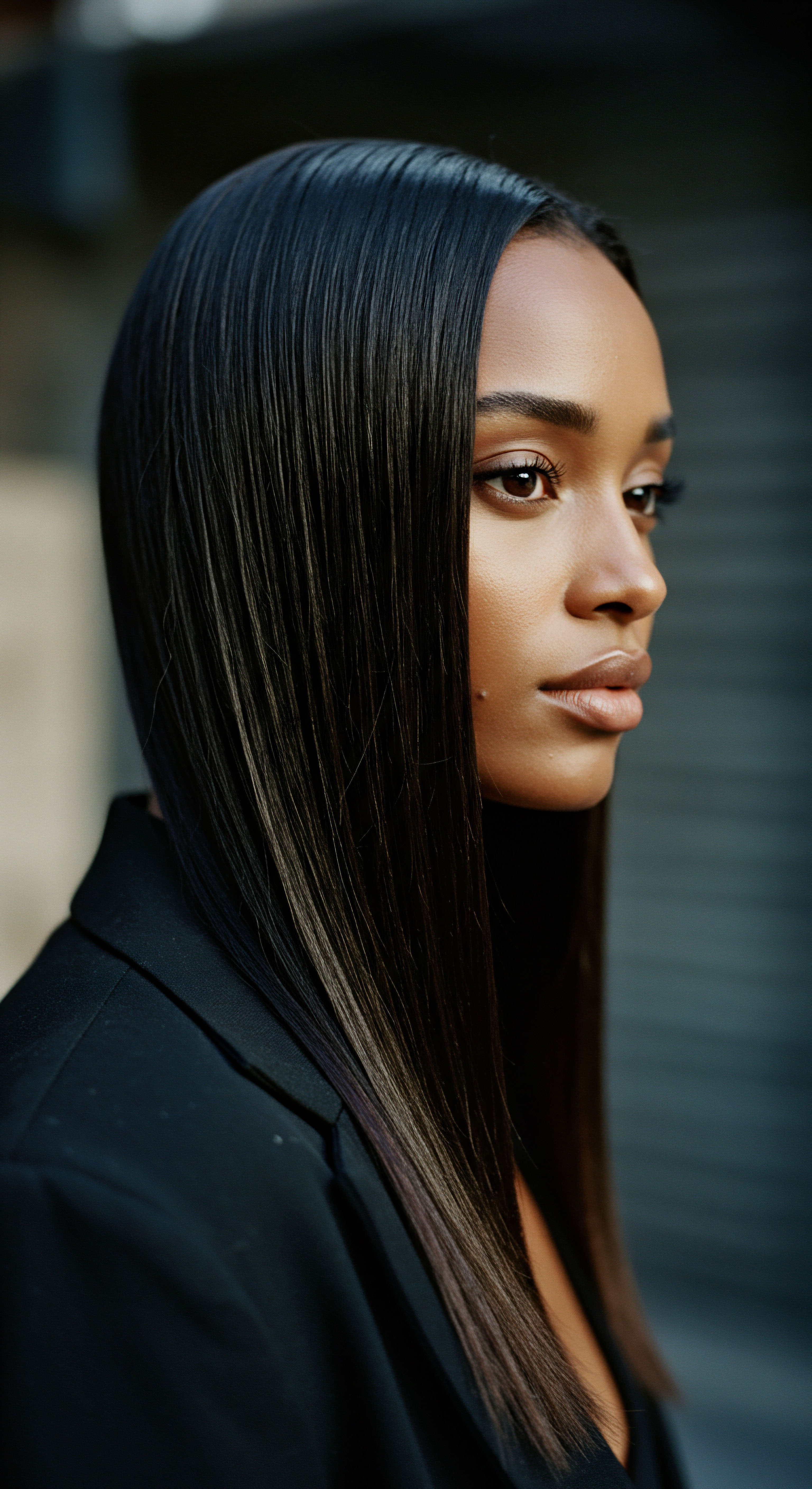
Fundamentals
The journey into understanding textured hair often begins with a gentle whisper, an invitation to recognize the unique language of one’s own strands. At the heart of this initial conversation lies the concept of Curl Pattern Classification. It represents a system, a thoughtful framework, designed to categorize hair based on the shape its individual strands form, whether they are waves, curls, or coils. This initial designation offers a foundational understanding, a starting point for dialogue between individuals and their hair, and between individuals and the broader world of hair care.
Think of it as a guide, an initial map to the wondrous landscape of hair. This classification system primarily observes the natural bends and spirals that hair forms as it grows from the scalp, free of manipulation. It helps to distinguish between different hair types, from the gently undulating waves to the tightly wound coils that spring with resilience. For those new to the expansive universe of textured hair, especially within Black and mixed-race communities, this preliminary categorization serves as a welcoming hand, offering a shared vocabulary to describe hair that has often been misunderstood or overlooked in mainstream beauty narratives.
Curl Pattern Classification offers a foundational framework for understanding the natural bends and spirals of individual hair strands, providing a shared language for textured hair care.
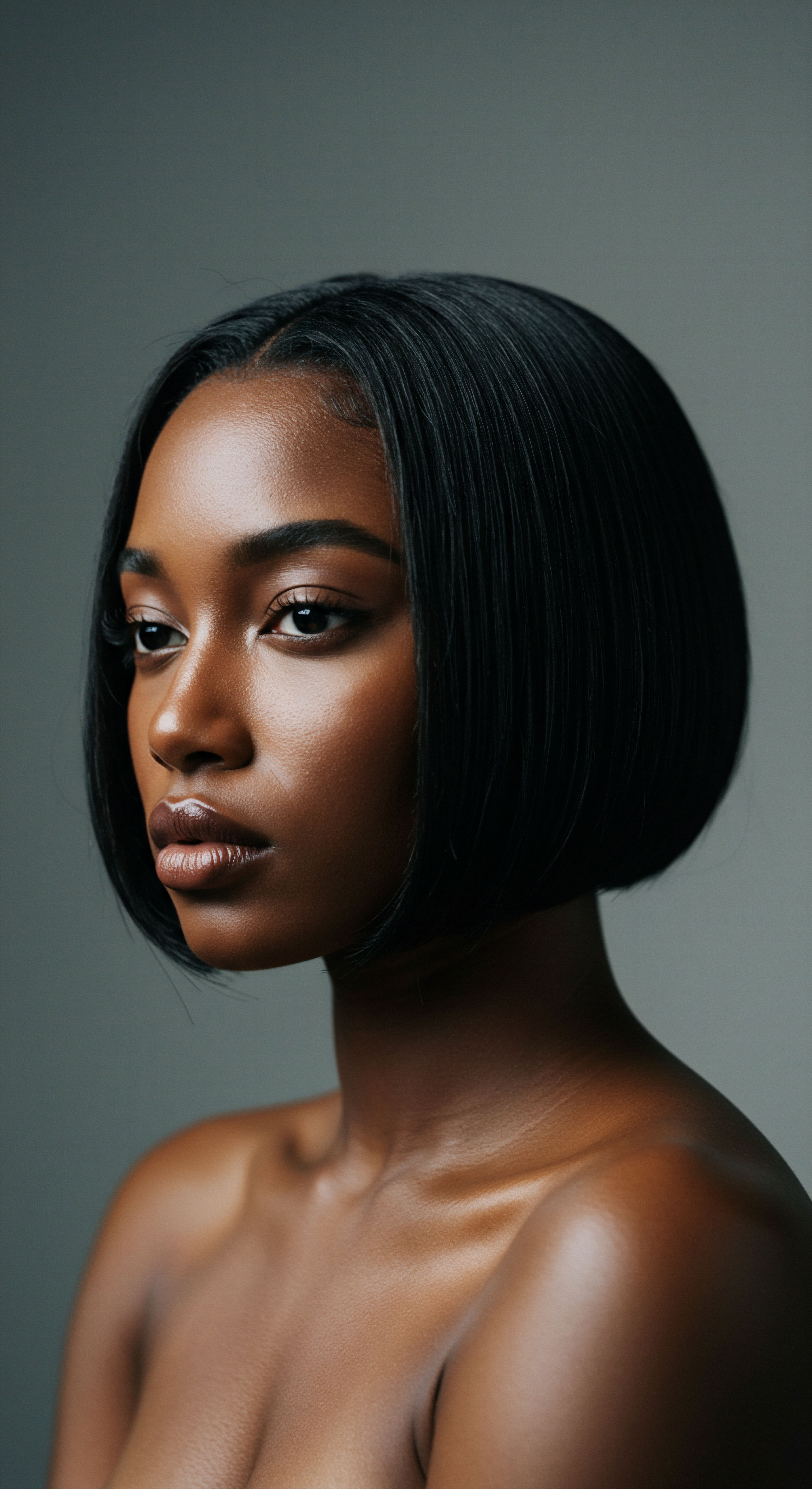
Understanding the Basic Shapes
At its simplest, Curl Pattern Classification helps us to observe and name the visible patterns of hair. It’s a way to acknowledge the inherent artistry of each strand.
- Wavy Hair (Type 2) ❉ These strands exhibit a gentle S-shape, ranging from a loose, barely perceptible wave to a more defined, flowing undulation. They tend to lie closer to the head.
- Curly Hair (Type 3) ❉ Here, the S-shape becomes more pronounced, forming distinct curls that spiral around themselves. These curls can range from loose, bouncy loops to tighter, more compact spirals.
- Coily Hair (Type 4) ❉ This category encompasses the most tightly wound patterns, often forming small, intricate Z-shapes or very tight spirals. Coily hair typically appears very dense and can experience significant shrinkage.

Significance for Daily Care
The immediate practical meaning of Curl Pattern Classification for a newcomer lies in its ability to inform basic care decisions. Recognizing whether hair is wavy, curly, or coily provides initial clues about its potential needs, particularly concerning moisture retention and product application.
For instance, coily hair, due to its tight structure, often requires more intensive moisturizing efforts to counteract dryness, as natural oils from the scalp find it more challenging to travel down the length of the strand. Wavy hair, on the other hand, might be easily weighed down by heavy products, benefiting from lighter formulations. This preliminary identification begins to demystify the process of selecting appropriate shampoos, conditioners, and styling aids, paving the way for a more intuitive and responsive hair care routine. It’s a gentle introduction to the idea that hair care is not a one-size-fits-all endeavor, but a deeply personal dialogue.
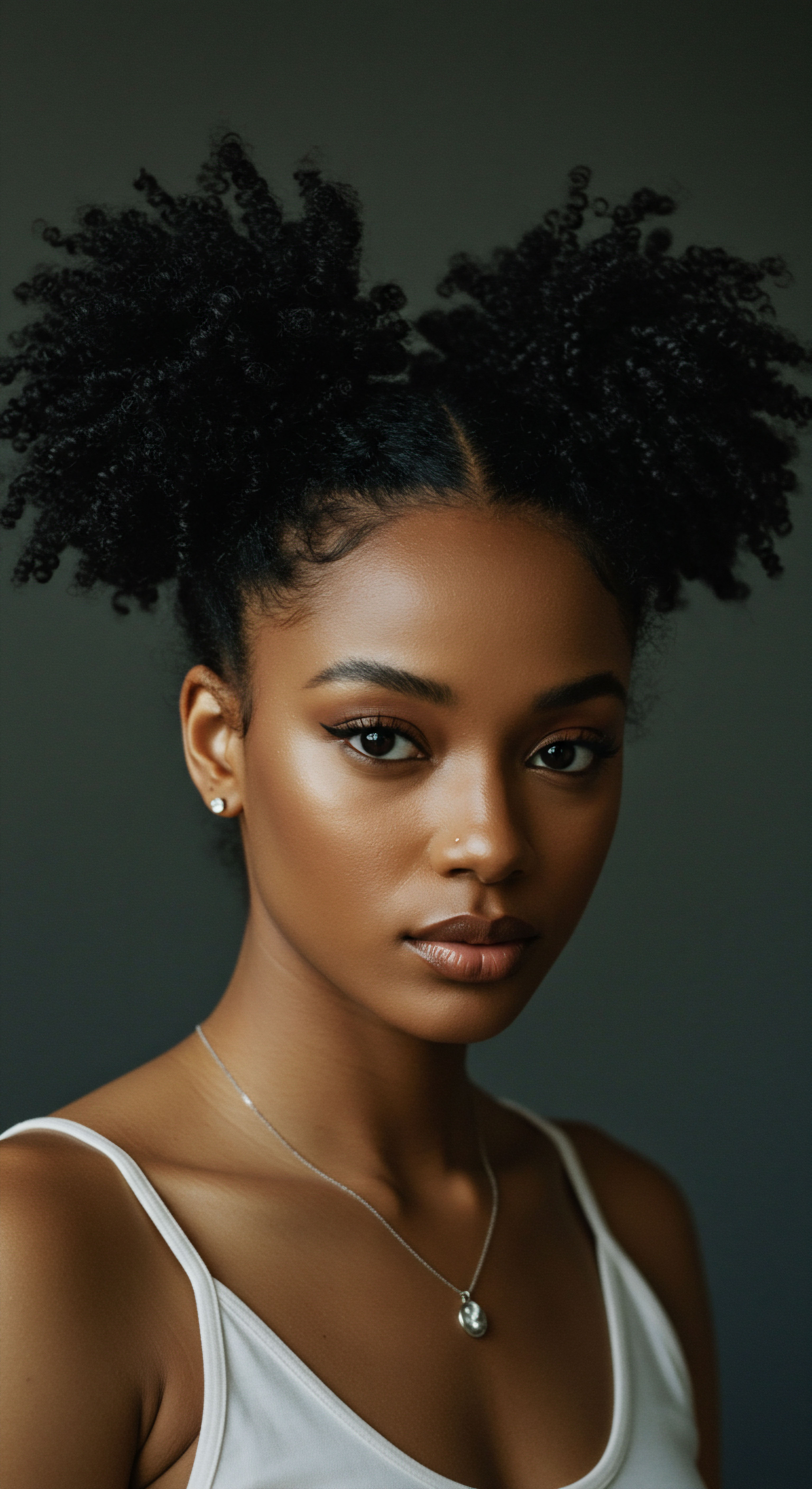
Intermediate
Moving beyond the initial observation, an intermediate understanding of Curl Pattern Classification deepens our appreciation for its practical implications and the nuances within each broad category. This expanded perspective acknowledges that hair texture is rarely a monolithic entity; rather, it often presents as a beautiful blend of patterns, even on a single head. The description of Curl Pattern Classification at this level transcends mere identification, stepping into the realm of how these patterns influence daily and weekly hair care rituals, styling versatility, and the subtle dance between product and strand.
For individuals with textured hair, particularly those within the vibrant Black and mixed-race communities, understanding these distinctions becomes a powerful tool. It shifts the interaction with hair from a battle against perceived “problems” to a celebration of inherent characteristics. This intermediate knowledge empowers individuals to select methods and formulations that truly honor their hair’s unique structure, moving beyond generic advice to tailored approaches.

Common Classification Systems and Their Practicality
Several popular systems have emerged to provide a more granular delineation of curl patterns, offering further insight into hair’s behavior. While each system has its proponents and detractors, their shared aim is to provide a more specific designation.
The most widely recognized system, popularized by Andre Walker, categorizes hair into four main types (1 through 4), with subcategories (A, B, C) indicating increasing tightness of the pattern.
| Hair Type Type 2 (Wavy) |
| Description Ranges from a loose, barely discernible S-shape to a more defined wave. |
| Typical Characteristics Generally fine to medium thickness, prone to frizz, can be easily weighed down. |
| Hair Type Type 3 (Curly) |
| Description Forms distinct S-shaped curls, ranging from loose loops to tight, springy spirals. |
| Typical Characteristics Medium to thick, often prone to dryness, benefits from moisture and definition. |
| Hair Type Type 4 (Coily) |
| Description Very tight, small curls or Z-shaped patterns, appearing dense and often with significant shrinkage. |
| Typical Characteristics Typically fine strands but densely packed, very prone to dryness, high shrinkage, can be delicate. |
| Hair Type Understanding these types aids in selecting appropriate care and styling techniques. |
Other systems, like LOIS (Liquid, O-shaped, I-shaped, S-shaped) or the F.A.C.E.S. method (Fine, Average, Coarse, Elasticity, Sheen), seek to add layers of information beyond just the curl pattern, considering factors like strand thickness, porosity, and density. While perhaps less universally known, these systems underscore a broader understanding that hair is a complex entity, where curl pattern is but one piece of the puzzle.
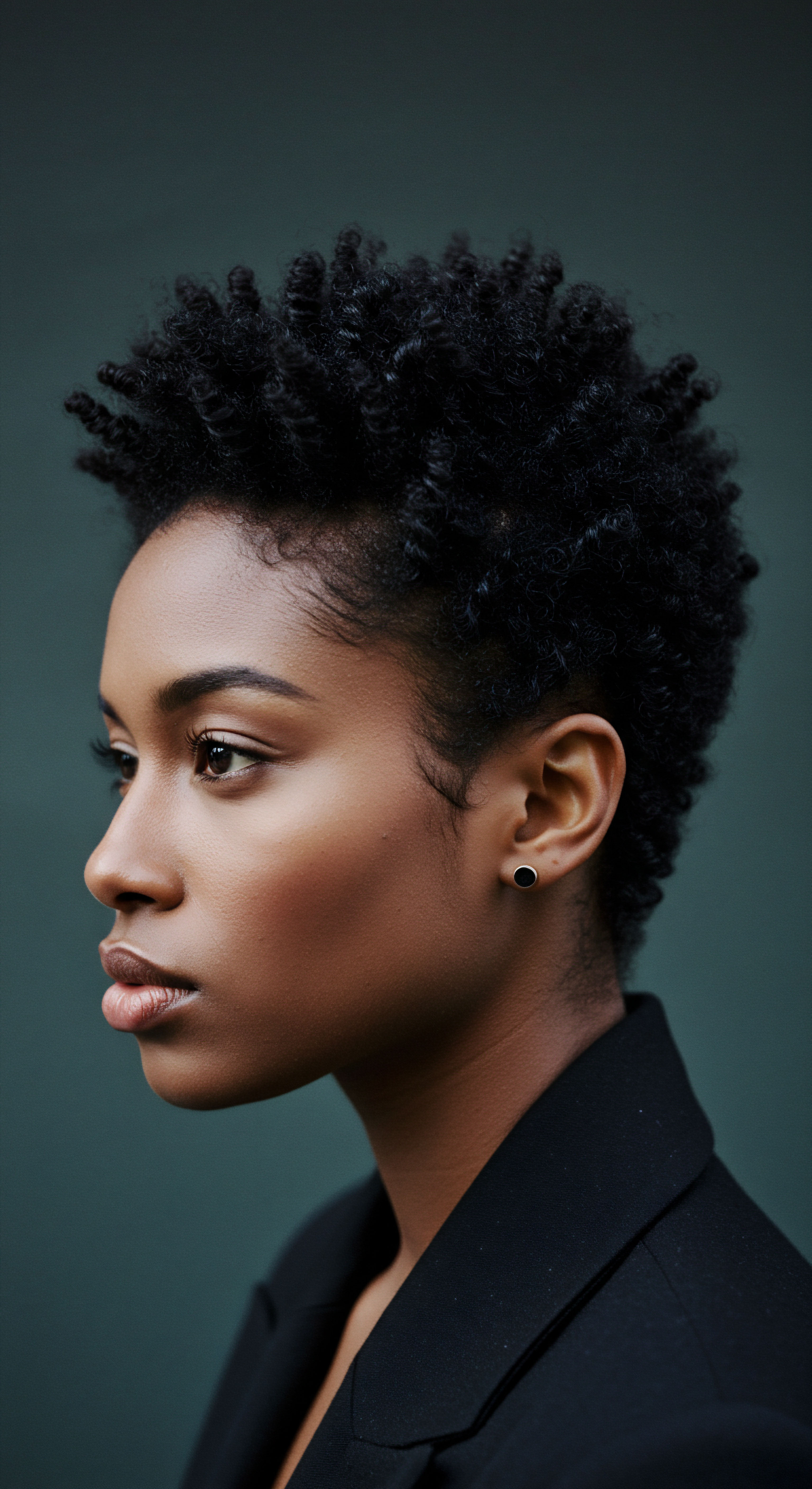
Impact on Product Selection and Application
An intermediate understanding of Curl Pattern Classification translates directly into more informed product choices. For instance, a person with Type 3C curls might find that rich creams and gels offer the best definition and moisture, while someone with Type 4B coils might prioritize heavier butters and oils for sealing in hydration and promoting softness.
The classification also guides application techniques. Hair with tighter curl patterns often benefits from applying products in sections to ensure even distribution, working the product from root to tip to properly coat each curl. Conversely, looser patterns might require a lighter hand to avoid product buildup or an overly greasy appearance. This level of understanding transforms the hair care routine from a trial-and-error process into a thoughtful, intentional ritual.
Intermediate understanding of curl patterns empowers tailored product selection and application, transforming hair care into an intentional ritual that honors hair’s unique structure.

Styling Versatility and Longevity
The practical significance of classification also extends to styling. Knowing one’s curl pattern helps anticipate how hair will behave in various styles. For example, a defined wash-and-go might hold its shape differently on Type 3A curls compared to Type 4C coils, due to differences in curl memory and shrinkage.
Furthermore, understanding the classification can influence the longevity of styles. Hair with tighter curl patterns, while prone to shrinkage, often holds styles like twists or braids with remarkable durability, due to the inherent interlock of the coils. Conversely, looser patterns might require more product or specific techniques to maintain definition throughout the day. This knowledge fosters a deeper connection with one’s hair, enabling individuals to celebrate its versatility and work harmoniously with its natural inclinations.
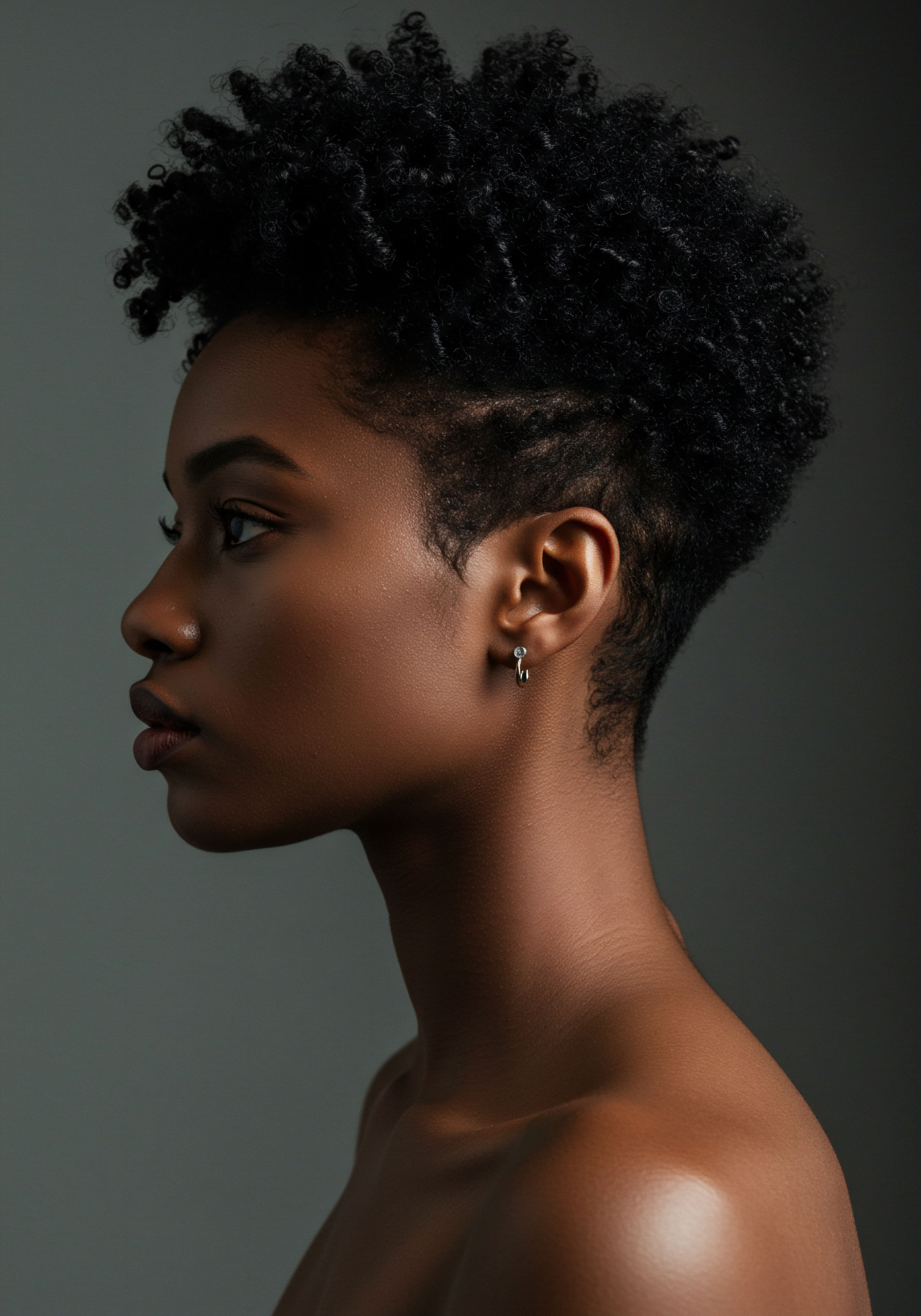
Advanced
At its most sophisticated level, the Curl Pattern Classification transcends a mere descriptive label, unfolding into a complex interplay of biological, historical, and sociocultural dimensions, particularly within the context of textured hair, Black hair, and mixed-race hair heritage. The meaning here extends beyond surface-level identification, delving into the very foundations of hair science, the evolution of beauty standards, and the profound psychological resonance these classifications carry. This advanced interpretation demands a critical lens, acknowledging that while these systems offer utility, they are also products of specific historical moments and cultural biases, carrying implications that stretch far beyond a simple numerical or alphabetical designation.
From an expert perspective, the explication of Curl Pattern Classification necessitates an understanding of its genesis, its limitations, and its enduring impact on self-perception and industry practices. It invites us to consider how a system intended for organization can, perhaps inadvertently, shape perceptions of desirability, influence product development, and even contribute to a subtle hierarchy within the diverse spectrum of textured hair.
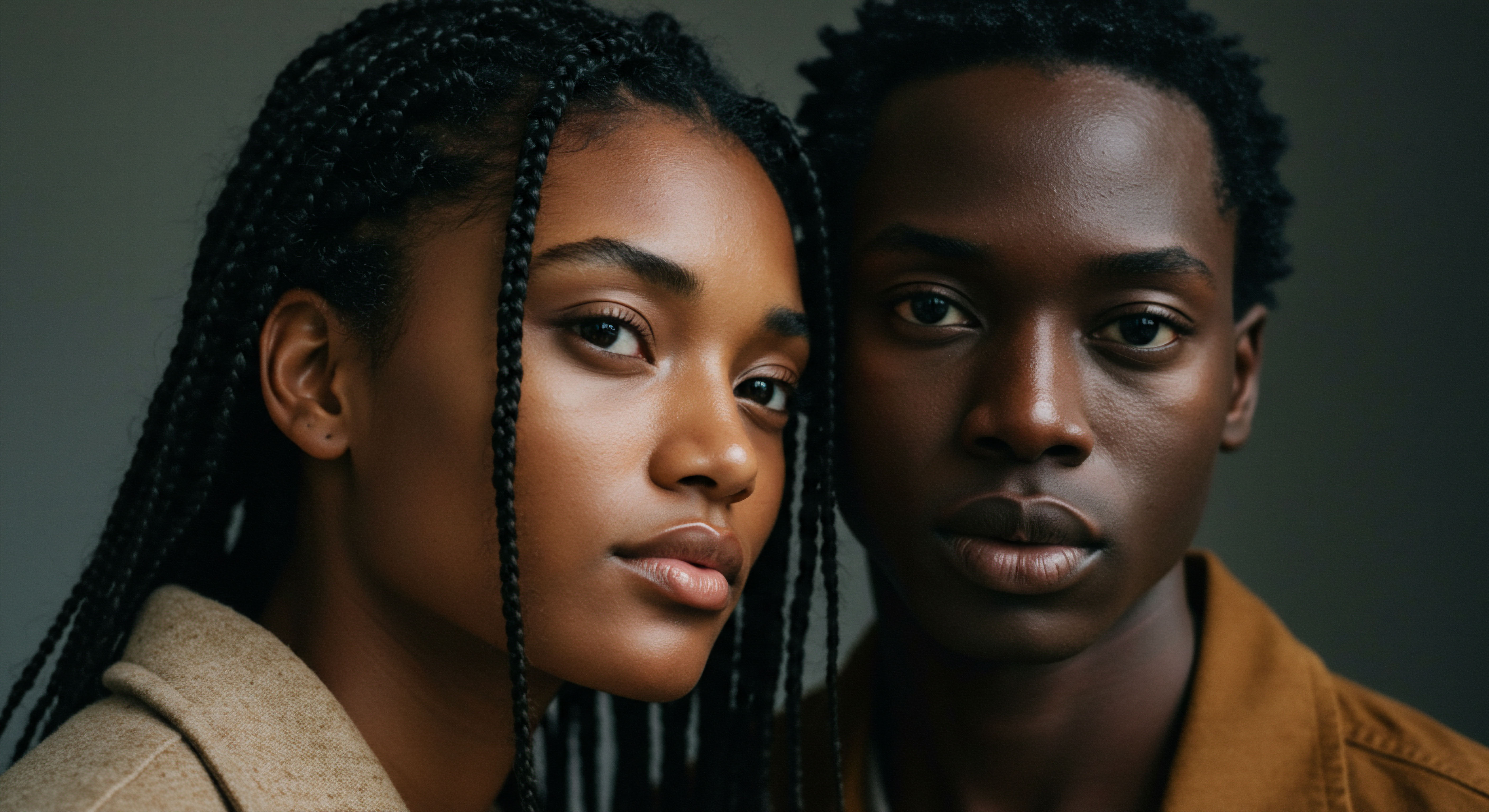
The Scientific Delineation of Hair Structure
At a scientific level, the underlying biology of curl patterns involves the follicular anatomy and the biochemical composition of the hair strand. The shape of the hair follicle itself, whether it is round, oval, or elliptical, largely dictates the curl pattern. A perfectly round follicle tends to produce straight hair, while increasingly oval or elliptical follicles yield waves, curls, and coils, respectively.
Furthermore, the distribution of keratin proteins within the hair fiber, specifically the differential arrangement of ortho- and para-cortex, contributes to the bending and twisting of the strand. Hair with tighter curl patterns often exhibits a more asymmetrical distribution of these cortical cells, creating the tension necessary for intricate coiling.
Beyond the follicle, the angle at which the hair emerges from the scalp also plays a role, with lower angles often correlating with straighter hair and more acute angles with curlier textures. This intricate biological blueprint provides the fundamental basis for the visual classifications we observe, offering a profound appreciation for the micro-architecture that gives textured hair its unique character. The scientific designation of curl pattern, therefore, is not merely about external appearance but about the internal, microscopic forces at play within each strand.
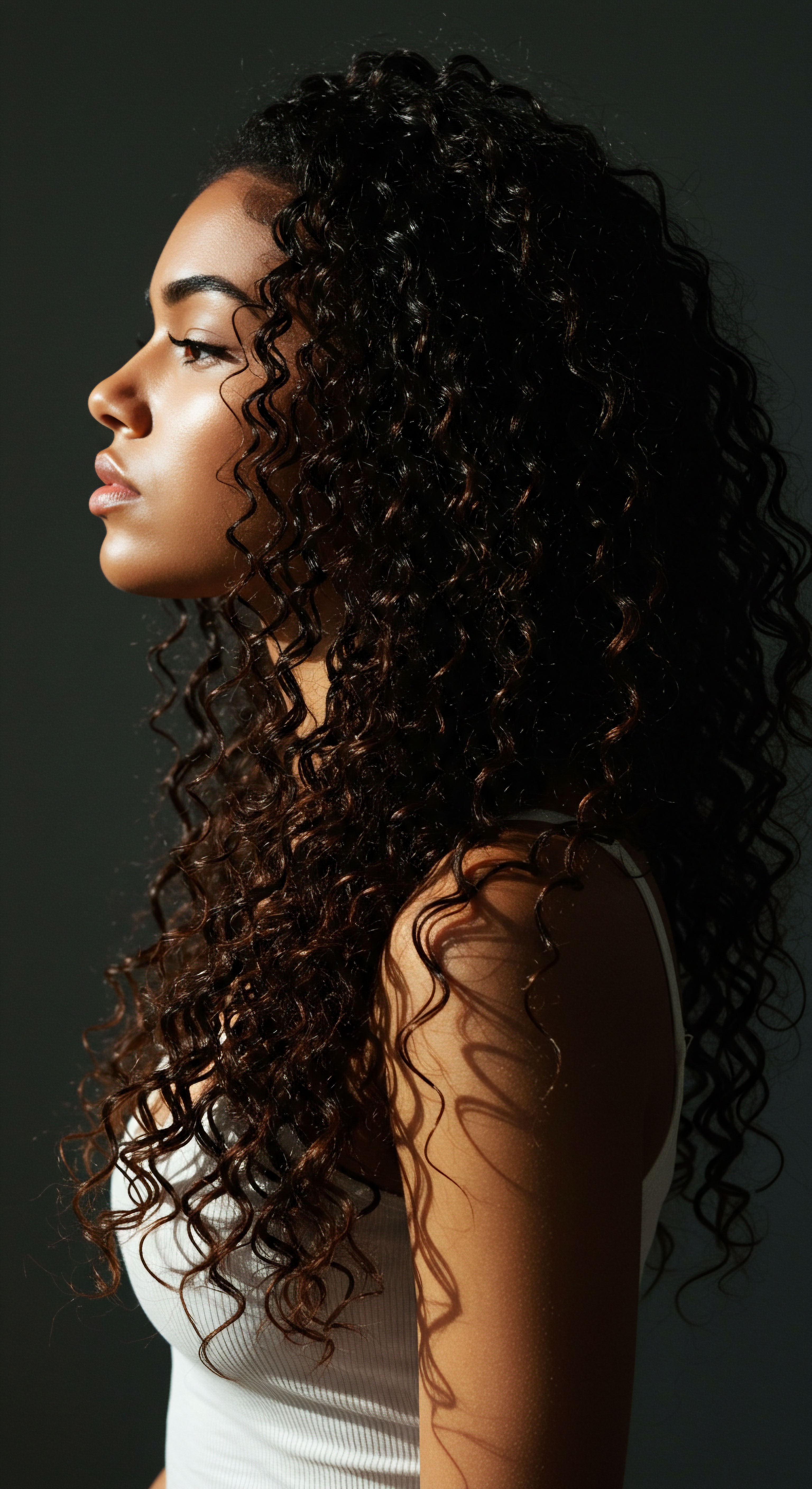
Sociocultural Interpretations and Historical Context
The advanced interpretation of Curl Pattern Classification compels us to confront its sociocultural implications, particularly for Black and mixed-race hair. While systems like Andre Walker’s were developed with the intention of providing a common language for hair care, their widespread adoption has not been without unintended consequences. Historically, beauty standards have often privileged straighter or looser hair textures, creating a societal narrative where tighter coils were, at times, marginalized or deemed “unmanageable.” The very act of classifying, when divorced from a deep cultural understanding, risks reducing the magnificent diversity of Black and mixed hair to a mere number, overlooking its profound cultural and personal significance.
Curl Pattern Classification, while useful, must be critically examined for its historical biases and sociocultural impact on perceptions of textured hair.
Consider the historical trajectory ❉ for centuries, the beauty industry largely ignored or sought to “tame” Afro-textured hair. The rise of the natural hair movement, however, brought a demand for understanding and celebrating these textures. Classification systems emerged within this context, offering a framework for discussion and product development. Yet, even within this empowering movement, subtle hierarchies can persist.
For instance, academic studies and industry reports often reveal a disproportionate focus on looser curl types (2s and 3s) in mainstream natural hair marketing campaigns, even within lines ostensibly designed for all textures. This visual bias can subtly reinforce a hierarchy, suggesting that certain curl patterns are more “desirable” or “marketable.”
A compelling example of this complex interplay comes from the professional sphere. A 2017 study conducted by the Perception Institute, titled “Good Hair ❉ The Perception Institute Study on the Social Perceptions of Hair,” revealed that Black women in the United States face unique biases related to their hair in professional settings. The research indicated that textured styles, particularly those with tighter curl patterns, were often perceived as less professional, less polished, or even less attractive by a significant portion of respondents, both Black and non-Black. While this study does not directly categorize curl patterns, it underscores the broader societal context in which hair classification operates.
The biases highlighted suggest that even a descriptive system can become entangled with judgments of desirability and professionalism, impacting everything from employment opportunities to self-esteem. This broader societal bias against certain hair textures highlights how even tools meant for understanding can inadvertently reflect and perpetuate existing prejudices. The challenge, then, lies in using these classifications as tools for empowerment and understanding, rather than as instruments of division or judgment.
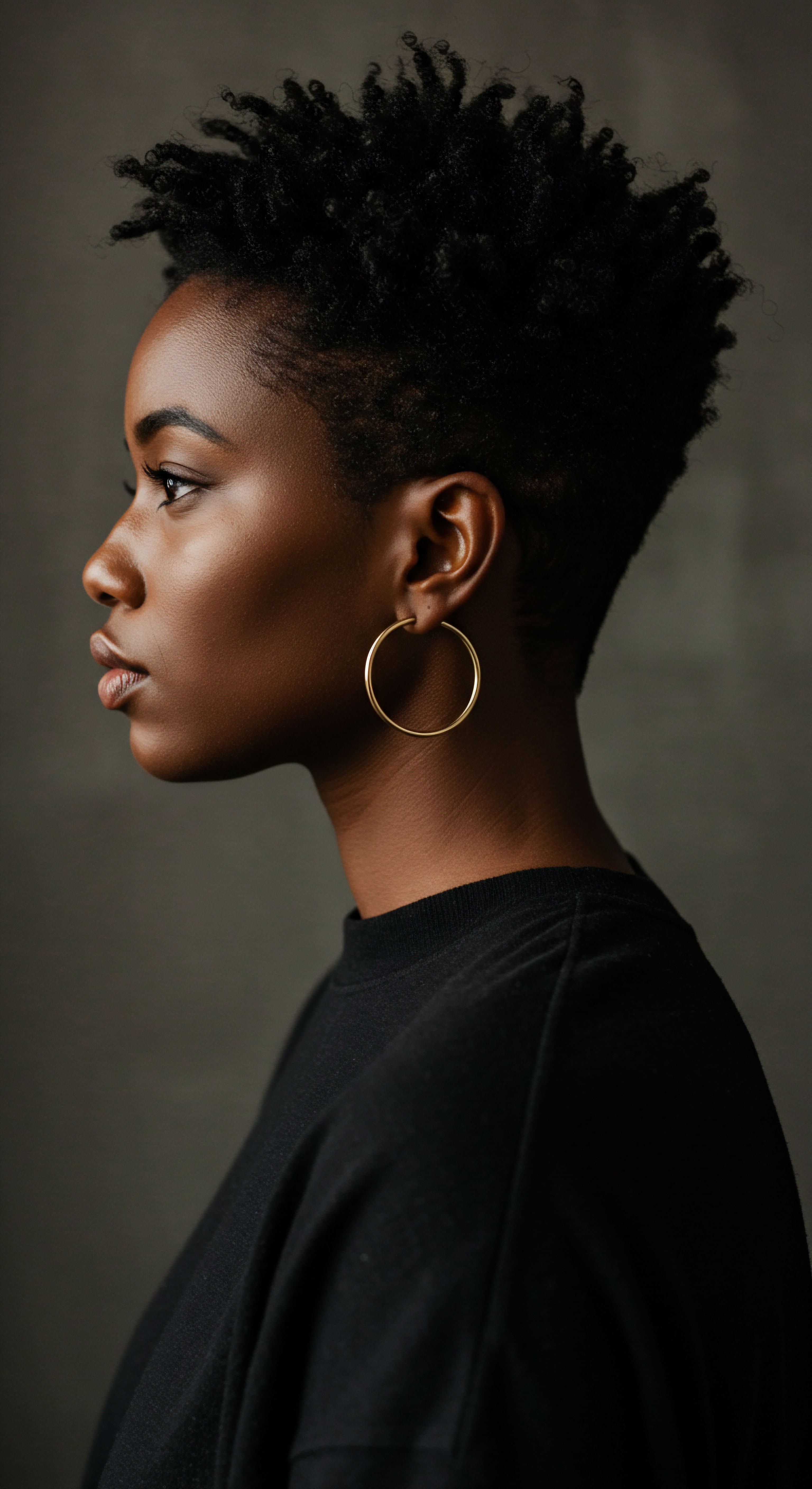
The Dynamic Nature of Curl Patterns
An advanced understanding also recognizes the dynamic and sometimes fluid nature of curl patterns. Hair can change over time due to a multitude of factors ❉ hormonal shifts (pregnancy, menopause), environmental conditions (humidity, pollution), chemical treatments (coloring, relaxers), mechanical damage (heat styling, tight hairstyles), and even the aging process. This means a person’s hair may not strictly adhere to a single classification throughout their life or even across different sections of their scalp.
This fluidity calls for an approach that is less about rigid categorization and more about adaptive care. For the expert, Curl Pattern Classification serves as a foundational knowledge base, but it is always contextualized by the individual’s current hair health, lifestyle, and aspirations. The deeper meaning, therefore, lies in using these classifications as a starting point for observation and responsive care, rather than a definitive, unchanging label. It encourages a nuanced approach to product formulation, styling techniques, and overall hair wellness, acknowledging that hair is a living, evolving part of our identity.
- Environmental Factors ❉ Humidity can significantly alter the definition and frizz level of curls, making a 3A appear closer to a 3B, or a 4B expand into a cloud of softness.
- Hormonal Changes ❉ Pregnancy or shifts in hormonal balance can lead to temporary or permanent changes in hair texture, sometimes loosening or tightening existing curl patterns.
- Product Interaction ❉ The weight and ingredients of hair products can temporarily redefine or relax curl patterns, emphasizing the need for responsive product selection.
Ultimately, the advanced explication of Curl Pattern Classification offers a compound understanding ❉ it is a scientific tool for description, a historical artifact reflecting evolving beauty ideals, and a living concept that continues to shape personal identity and communal discourse within the textured hair landscape. Its full significance is realized when viewed through these multiple, interconnected lenses.

Reflection
As we draw our thoughts together on Curl Pattern Classification, we are invited to consider it not as a rigid box into which we neatly place our strands, but as a tender whisper, a guiding hand in our individual and collective hair journeys. It is a language we have cultivated to describe the magnificent diversity that springs from our scalps, a way to celebrate the unique spirals and waves that tell stories of heritage, resilience, and personal expression. This framework, while offering a pathway to understanding and informed care, ultimately reminds us that the true beauty of textured hair lies in its living, breathing fluidity, its capacity for change, and its profound connection to identity. It is a tool, yes, but more importantly, it is an invitation to listen closely to our hair, to honor its inherent nature, and to cherish the vibrant spectrum it represents, far beyond any label.
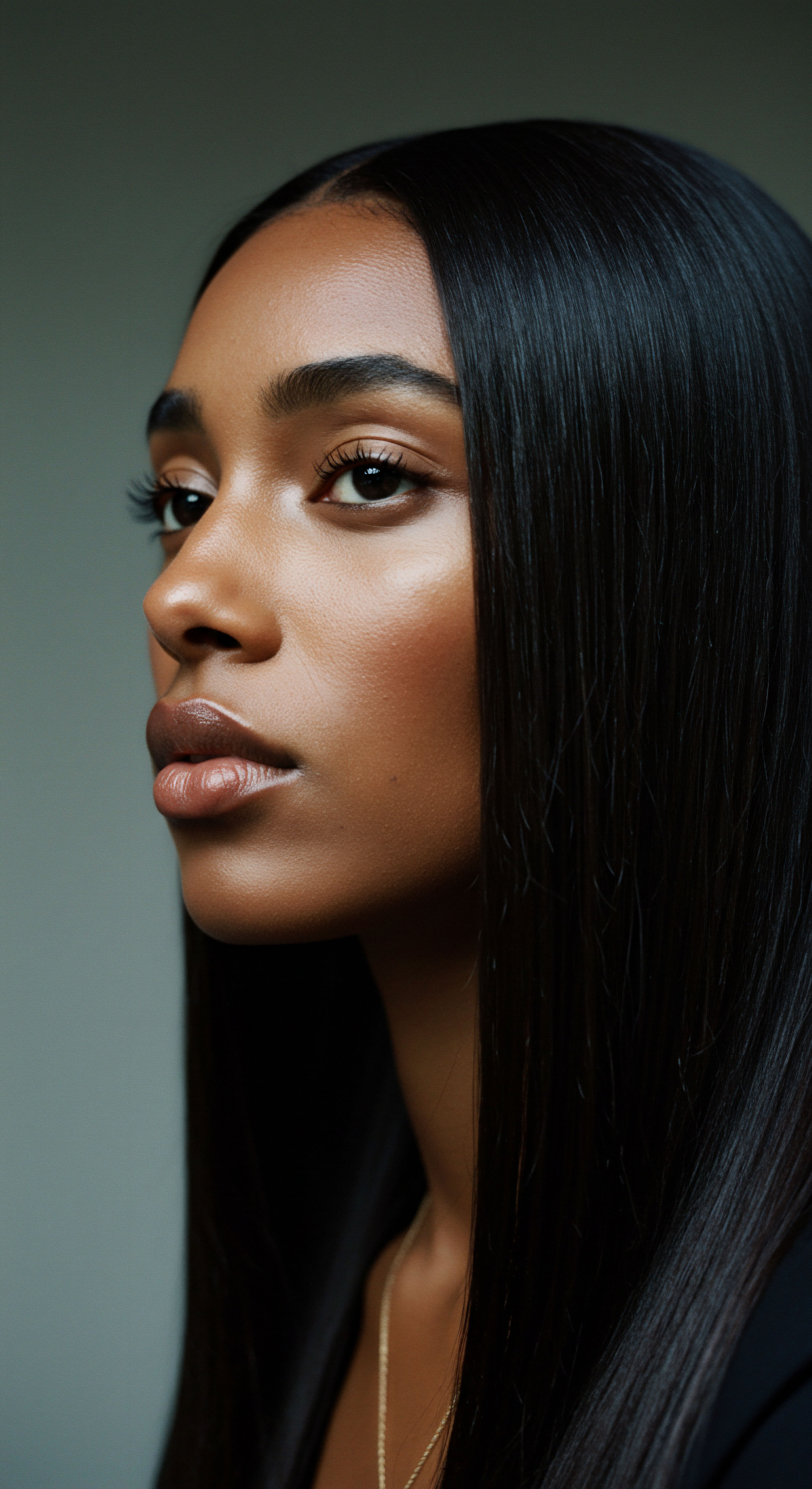
References
- Perception Institute. (2017). Good Hair ❉ The Perception Institute Study on the Social Perceptions of Hair. New York, NY ❉ Perception Institute.
- Franbourg, A. Hallegot, P. Baltenneck, F. Toutain, C. & Leroy, F. (2003). Current research on ethnic hair. Journal of the American Academy of Dermatology, 48(6), S115-S119.
- Khumalo, N. P. (2005). The hair of Africans. International Journal of Dermatology, 44(s1), 8-11.
- Robbins, C. R. (2012). Chemical and Physical Behavior of Human Hair (5th ed.). Springer.
- Gaskin, L. (2018). The Science of Black Hair ❉ A Comprehensive Guide to Textured Hair Care. Independently published.
- Andre, W. (2001). Andre Talks Hair. Simon & Schuster.
- Price, C. (2015). Frizzy, Frizzy, Frizzy, Frizzy Hair ❉ The Black Hair Handbook. CreateSpace Independent Publishing Platform.
- Okereke, M. (2013). The Hair Care Revolution ❉ A New Approach to Hair Care for the 21st Century. Independently published.
- Dawber, R. P. R. (2004). Hair and Scalp Disorders ❉ Common Problems and Their Management. CRC Press.
- Cruz, R. E. & Pellerin, A. (2016). Hair Story ❉ Untangling the Roots of Black Hair in America. St. Martin’s Press.